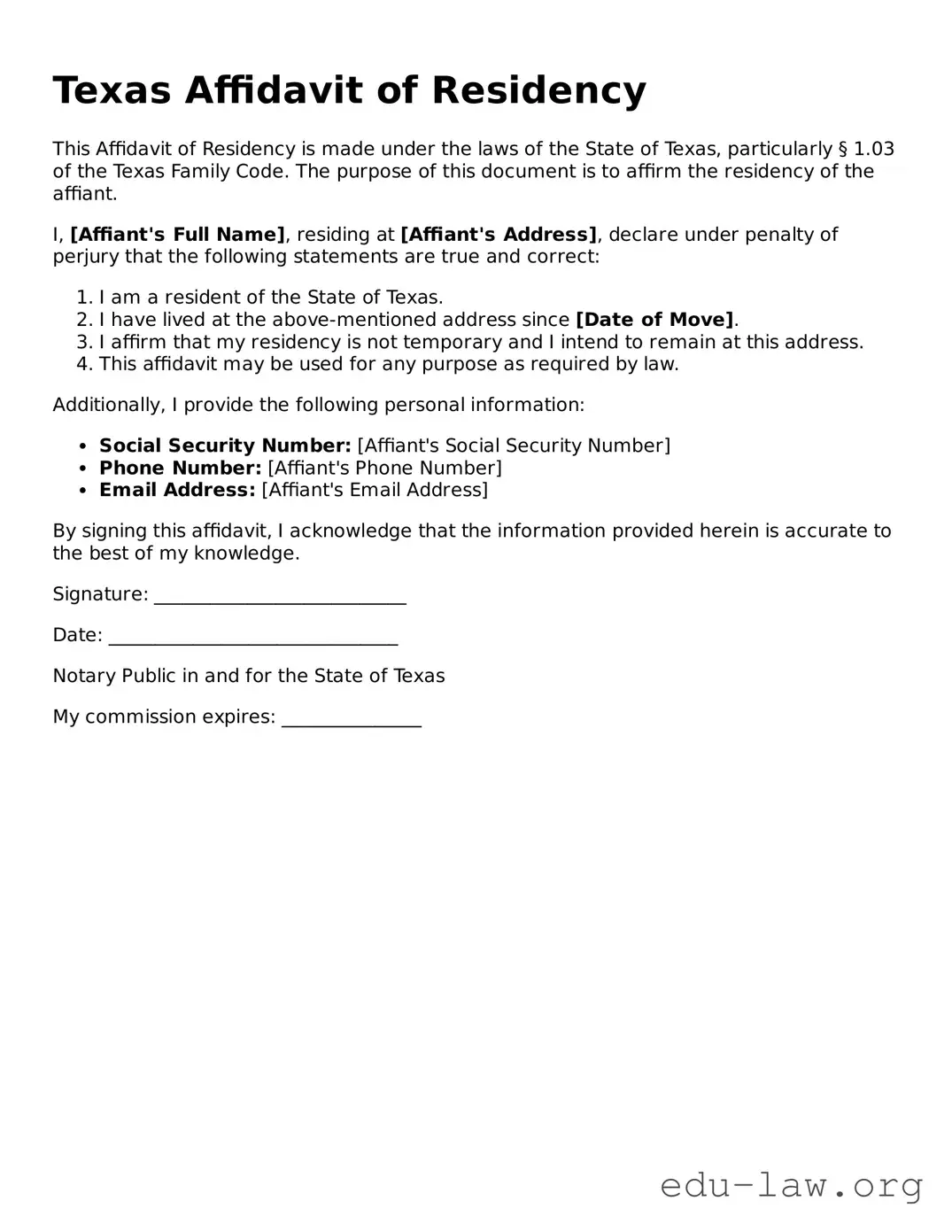What is the Texas Affidavit of Residency form?
The Texas Affidavit of Residency form is a legal document used to declare a person's residency in Texas for various purposes, such as enrolling in public schools or obtaining a driver's license. This form typically requires the signature of the person claiming residency and may also need to be notarized.
Who needs to complete this form?
Individuals who are establishing residency in Texas may need to complete the Affidavit of Residency form. This includes parents or guardians enrolling their children in public schools and residents applying for certain identification documents.
What information is required on the form?
The form usually requires personal details such as the individual's full name, residential address, and the duration of their residency. Additionally, it may ask for signatures of witnesses or individuals who can verify the residency claim.
Is notarization required for this form?
In some cases, notarization may be required. This ensures that the information provided is verified and can help prevent fraud. Always check the specific requirements based on your situation or the institution requesting the form.
Where can I obtain the Texas Affidavit of Residency form?
The form can often be obtained from local school districts, the Texas Department of Public Safety, or online government websites. It’s important to use the official version to ensure it meets the necessary legal standards.
How long is the Affidavit of Residency valid?
The validity of the Affidavit of Residency can vary. Generally, it remains valid for as long as the residency status is unchanged or until a new affidavit is filed. Institutions may have specific time frames for accepting the affidavit, so it’s best to verify with them directly.
What happens if the information provided is not accurate?
Providing inaccurate information on the affidavit can lead to legal consequences, including potential penalties or the denial of services such as school enrollment or a driver's license. It’s essential to ensure that all information is accurate and truthful.
Can I update my Affidavit of Residency once it has been submitted?
Yes, if there are changes to your residency status or personal information, you should submit a new Affidavit of Residency. It’s important to keep all relevant parties informed to maintain compliance with their requirements.
Who can witness the Affidavit of Residency?
Typically, a witness can be any adult who is not related to the person completing the affidavit. Some organizations may have specific requirements regarding who can act as a witness, so it is advisable to check with them first.
